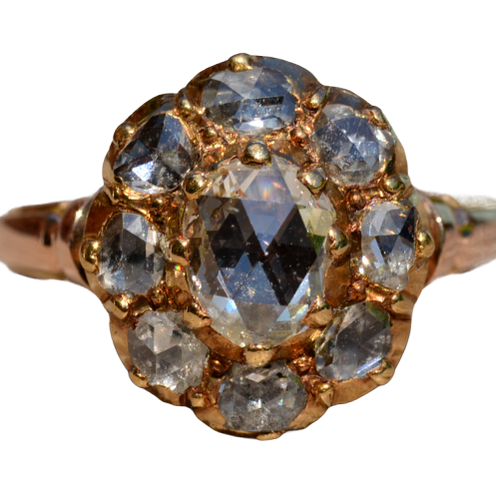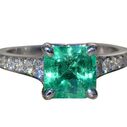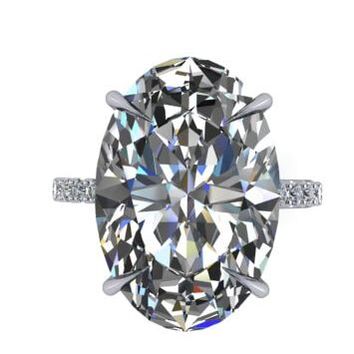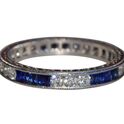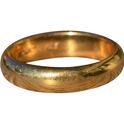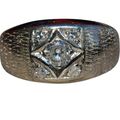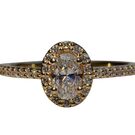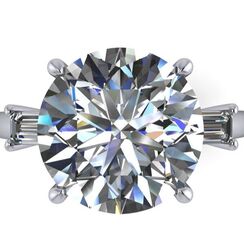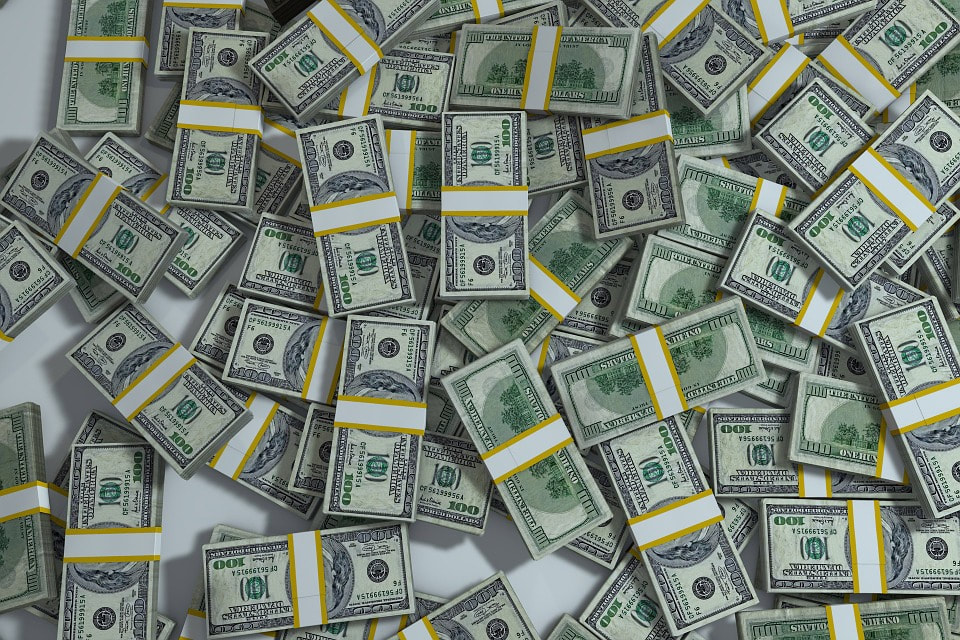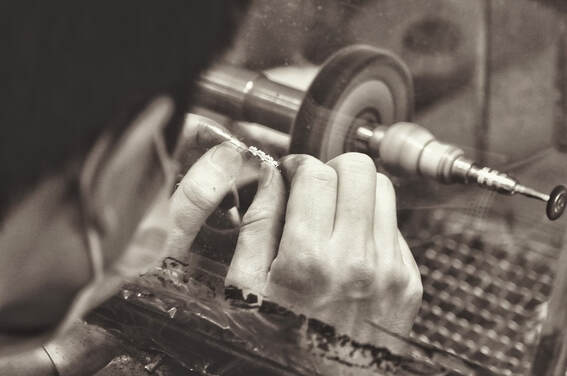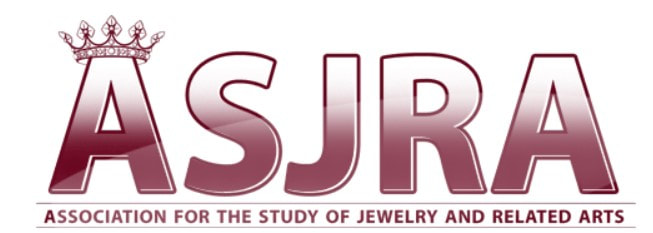|
Jewelry Era's In Order
Need help identifying the era of you jewelry? We offer identification and appraisal services! Additionally we are always buyers and collectors of all jewelry! ANCIENT JEWELRY: Ancient jewelry, as we term, to simplify the board category of paleolithic jewelry to roman jewelry consists of the oldest known jewelry. This jewelry is difficult to class as an overall style as it consists of a vast period of time and was very local specific. From bear claws to drilled shell beads the earliest jewelry is believed to stem from the caveman era. Fine jewelry however emerged a bit later. Bronze jewelry first surfaced in the ancient cities ruled by Kings in Mesopotamia around 3000-2500BC. This was the birth of the bronze era as well as the iron era. It is also during this time where gold jewelry became all to be desired as it was the highest regarded metal for jewelry purposes due to its exceptional color, its luster, and its malleability. Since, at this time, technology was quite geographic as were styles, there was one exception to the preference of gold and that was in Egypt where Egyptians favored silver to gold. We at Velvet Box Society call this broad period of time ancient jewelry as there are many, many sub categories. I will touch on a few just to simplify things:
Between the roman empire and the renaissance was, what most historians call the middle ages. During the middle ages or "dark ages" as some term it much of the creativity of the world stagnated. There was still however jewelry being produced. We try to divide it by area and age (sub divisions of time). During this time goldsmiths were familiar with Roman techniques and the jewelry they produced was remarkable in quality as they slowed production and made slightly better craftsmanship.
Medieval and Renaissance Jewelry Between the roman empire and the renaissance was, what most historians call the middle ages. During the middle ages or "dark ages" as some term it much of the creativity of the world stagnated. There was still however jewelry being produced. We try to divide it by area and age (sub divisions of time). During this time goldsmiths were familiar with Roman techniques and the jewelry they produced was remarkable in quality as they slowed production and made slightly better craftsmanship.
Baroque and Rococo Jewelry Baroque Era Jewelry The evolution of the renaissance paved the way for international trade. International trade created a middle class of merchants and a new middle class of craftsmen that saw an increase in wealth. This allowed the bourgeoisie to buy better quality and more expensive jewelry, the kind of jewelry that had previously been reserved for nobles. This meant, for the first time, that a new trade level of jewelry began to emerge, the retail jeweler. These retail jewelers sold pieces from their area and created many defined regional differences in style and design however there were some consistencies that seem to be somewhat universal as with times before. Symmetry, and more importantly. a different type of gemstone setting caused major influences on this period. Gemstone setting was now focused on highlighting and enhancing the gem. This meant new cutting techniques and foiling techniques to make the stones stand out as oppose to just accent. The push in cutting, and foiling meant the availability of new shapes and fully faceted gems. At the late end of the Baroque period we saw the push for even more enhancement of the beauty of the gemstone and we can clearly see gem mountings became more delicate. The design of cluster settings became less favorable and a push towards ribbons and blow like designs. In fact, the bow is one of the most prevalent features of Baroque jewelry. We also see complimentary use of enamel and pearls which became more available from Persia! Rococo Era Jewelry As the use of ribbons and bows was in full force. International trade saw flowers being transports (tulips as example) which became interest to craftsman and artisans. Flowers, foliage and feathers, whimsical in shape, define the era of rococo jewelry which transitioned and existed in tandem/as part of the Georgian era jewelry. Rococo era jewelry had a focus as much on flowers and foliage as it did with functional jewelry. Diamonds, which were immensely popular during the baroque period, continued in popularity along with ruby, emerald, and topaz in the precious realm. The advancements in cuts also lead the way to a new and better paste as the brilliant cut was now a possibility Georgian Era Jewelry Jewelry from the Georgian Period is quite rare. Most Georgian antique jewelry we find today has been taken apart or modified to reflect the trends that were happening during the time. Most surviving jewelry from this period is handmade, typically with 18K gold and silver. Because gold was so expensive during the Georgian period, most diamonds were set in silver that was backed with gold in order to protect the silver from tarnishing over time. One distinguishing factor of the Georgian Period is the shape of the stones used. Jewelry was made to suit the stones that were available, and stones were never cut specifically for a piece of jewelry. It’s typical for a piece of Georgian jewelry to have many different sizes and shapes of stones within a single piece. The cutting techniques we have today were not available in those times, and it was common for jewelers to back the stones in foil to bring out the sparkle that we’re so used to seeing today. Rose cut and table cut diamonds were very commonly used, as well as sapphires, garnets, precious topaz, and amethysts. Many Georgian rings also include floral, bow, or scrolling motifs. Victorian Jewelry The Victorian Period was named for Queen Victoria, who inherited the throne of England in 1837 when she was only 18 years old. Victoria was young, beautiful, and loved immensely by her subjects. Her tastes in fashion and jewelry were highly regarded and inspired the Victorian jewelry trends of the time. Queen Victoria was married in 1840, and she wore a snake motif ring (a symbol of eternal love at the time) set with her birthstone, a brilliant green emerald, as her engagement ring. In the Victorian era, it was very common for birthstones to be used instead of diamonds for engagement rings. After Victoria’s beloved Albert passed away in 1861, the queen went into the customary mourning period for 18 months, which inspired the gold lockets and black jet pieces commonly seen in this period. Nearing the end of the Victorian period, the discovery of diamonds in South Africa helped popularize diamonds again. Additionally, this historical period is where the very first diamond solitaire engagement rings originated! At the turn of the century, society was at the height of the industrial revolution and the jewelry of the time period reflected the dawning of a new modern age. Queen Victoria passed away in 1901 after a 64 year reign, marking the end of an era and the beginning of a new one when her son Edward ascended the throne, ushering in the Edwardian era. Edwardian Jewelry Queen Victoria’s son, Edward VII, took the throne in 1901. Society was at the height of its elegance and sophistication: it was during this time that advances in metal fabrication finally allowed for the use of platinum in jewelry (which still remains extremely popular today). This advance makes jewelry dating much easier - if a piece is made with platinum, we can be fairly sure that it was made in the early 20th century or later. In addition, it was still common practice for jewelers to back platinum pieces with gold until 1910 or so, making dating even more precise. Because of the strength of platinum, its use allowed jewelers to produce more intricate, detailed pieces. Some Edwardian engagement rings are so detailed it appears that the diamonds are set in lace instead of metal. Jewelry from the Edwardian period was light and delicate, and using as many diamonds as possible in a design was essential. The overall style of the times was light, feminine, and airy. Women commonly wore white, white, and more white. Diamonds were the gemstone of choice during the time, but we also see sapphires, aquamarines, and most notably, electric green demantoid garnets from Russia, which are very rare to find in larger sizes. Additionally, a new type of decorative enhancement called “milgraining” was used extensively during this period. Milgraining involves a small border of platinum beads set around the edges of a piece of jewelry that adds a soft, elegant look. The end of the Edwardian era came abruptly with the start of World War I in 1914. Gone was the lightheartedness of the times: people began to hide or sell all their jewelry, and platinum became scarce due to the demand for its use in the war effort. Art Nouveau Jewelry The Art Nouveau Period overlapped the Victorian and Edwardian eras, and came about as an artistic revolt against the technological advances of the industrial age. The movement was short lived, but produced some of the most sought after jewelry in the world. Rene Lalique and Gustav Klimt are probably the most recognizable artists from the period. The emphasis of Art Nouveau jewelry was placed on hand-craftsmanship, creativity, and design. The female form, oftentimes nude, was commonly used and considered highly scandalous by conservative Victorians and Edwardians. Moonstones, opal, and agate were popular gemstones of the period, and diamonds were used sparingly as accents to enhance the artistic appeal of the piece. Japanese themes of nature, birds, and dragons were commonly used as well. The most important technique employed in the design of Art Nouveau jewelry was enameling. The art of enameling was perfected during this time, and the use of “plique a jour” - an enameling technique that produces a stained glass effect - was also revived, complementing the sensual, natural themes of this highly artistic period. Art And Crafts Jewelry The arts and crafts period we define as the period of time between the Art Nouveau Era and the Art Deco era that actually developed earliest and most fully in the British Isles. The movement flourished in Europe and thus moved and flourished in North America between about 1880 and 1920. In Japan it emerged a bit later but similar style movements in jewelry can be seen starting in the 1920s and known in Japan as the Mingei movement. The Era in jewelry stood for traditional craftsmanship, and often used romantic and folk style decorations to display its anti-industrial craftsmanship. The period is often termed the American craftsman period here in us. In the United States a new type of virtue was attempted to replace heroic craft production. This market was created specifically for well-decorated middle-class homes. The emerging middle class was seeking the look, feel, and type of jewelry heightened in the Art Nouveau period and this movement, created by local craftsman, was able to bring the style to the masses. This thought coupled with the rejection of traditional jewelers brought the arts and crafts period to where it is today. Art Deco Jewelry When World War I began in 1914, manufacturing of jewelry came to a stop. The hard times brought on by the war also marked the end of the fashions and trends that were popular in the Edwardian era. Women were needed to take over men’s roles in the workplace while they were at war, and they started learning valuable skills and earning their own money. This change combined with winning the right to vote in 1920 lead to independence and emancipation for women. When the war ended, the “Roaring 20’s” ushered in a new attitude and an overall desire to live life to the fullest - an attitude that was very much reflected in the new jewelry design trends. The most characteristic feature of Art Deco jewelry is the emphasis on bold, geometric designs. Lines were straight and linear, and gemstone shapes most often followed suit. Calibre cut sapphires, rubies, and emeralds were used to add splashes of color to otherwise diamond-centric jewelry. Black onyx and red coral were also used often as accent colors. When King Tutukhamen’s tomb opened in 1922 there was a return to Egyptian revival jewelry as well. Platinum was still the metal of choice, but white gold was also popular since the cost of platinum was so high. Women wore multiple bracelets stacked on their wrists, as well as long strands of cultured pearls, which complemented flapper-style fringed skirts and backless dresses. Major designers of the time were Tiffany, Cartier, Van Cleef and Arpels, Harry Winston, Lalique and Mauboussin, among others. Their great influence of jewelry design and impeccable reputations were well earned and still stand true today. Retro Jewelry Jewelry design regained speed in the late 1930’s after the United States began its recovery from the collapse of the stock market in 1929 and the subsequent Great Depression. Hollywood and all its glamour became the influence of Retro jewelry: it is easily identifiable by the use of bright, highly polished yellow, rose, and green gold. The jewelry is big, bold, and three dimensional. Large emerald cut semi-precious gemstones were the star of this era, namely amethyst, aquamarine, and citrine. These large stones were often accented by small diamonds and calibre cut rubies and sapphires. Due to the beginning of World War II in 1941, platinum became scarce again and gold was the metal of choice. Common design themes from this era include big flowing ribbons and bows, as well as the use of flowers and even animals. Wide gold bracelets, oversized dress clips and earrings that were worn high up on the ear were all popular styles. Notable designers of this time were Verdura, Oscar Heyman, Buccellati, and William Russer, among many others. Hollywood Glam Jewelry Post-war 1950's was a time of great economic growth that lead to a rise in the upper middle class. Jewelry from the 1950's reflected this new prosperity by featuring an abundance of gemstones set in flashy, dramatic designs, with a focus once again on diamonds, diamonds, and more diamonds. In 1948, DeBeers unveiled their still famous ad slogan "Diamonds Are Forever", prompting an increased demand for using diamonds in all types of jewelry. The trends of 1950's jewelry was similar to that of the 1940's, but they were often executed differently. Designs were now more light and textural, as opposed to the solid, high polished look of Retro jewelry. Engraved finishes and braided rope accents were popular design elements. Platinum once again became the metal of choice used for diamond jewelry. As the retro era saw the birth of notable designers, these designers began to define themselves in the 1950s through the 1960's. Seemingly just before the mid century modern period we define the Hollywood glam era as the era of Harry Winston. A time in history where classic designs featuring large stones reigned supreme. The influence of Hollywood and movie stars pushed big diamond and big gemstone look. A great period in the jewelry business. Mid Century Modern Jewelry Overlapping the Glam era towards the end was a push back from the mainstream jeweler who's customers could not afford such lavish pieces. So instead, they focused on design. Symmetrical designs by newer designers that seem edgy and streamlined was the focus of mid century modern design. These designs took root in classics from the retro era but had a new modern approach often utilizing different finishes on the pieces. Simplistic yet complex sometimes symmetric yet always with a modern, almost futuristic appeal. The push to be different defines the mid center modern era jewelry. As the streamlined angular look became more mainstream many smaller newer designers wants to add their own twist to this period. Many designers such as Arthur King, Pierre Sterle, and George Jensen helped define the era. Brutalist Jewelry The brutalist era of jewelry co-existed along side and in tandem with the mid-century modern movement yet started a bit later. Now that information and styles were spreading faster through TV and Hollywood, it birthed movements of jewelry eras much faster. The brutalist era defined by big looks, somewhat of those from the classic Hollywood glam era, yet redefined by the used of a more "natural approach" to setting using flowed gold and nugget-esque looks from artists like Arthur King. This movement was a push away from classic but to be different from mid-century modern appeal. The era was a pushback to nature. Random set diamonds and gems, on a variety of gold textures surfaces was a look of its own. Contemporary Jewelry The 1980's Jewelry
The 1990's Jewelry
Jewelry from the 2000's
Simplistic Jewelry 2015- 2021 (maybe longer) As the wrist watch trend continued to rise, so did a pushback to classic. This meant the rise in popularity and demand of vintage watches to a level we had previously not seen. Trending today vintage watches have been popular for quite some time. We are also seeing a new real trend in jewelry. Simple dainty designs are popular. Whether it be a necklace, bracelet, or ring simple clean lines are on trend. Recently 2017-to today 12/15/2020 the popularity of oval shaped diamonds has been the newest craze. Set simplistically with thin sides often shared prong set with diamonds in white, and rose gold mainly, yet we are seeing a major uptick in yellow gold sales which started around 2018 and is continuing up trend. We all will see how these styles develop in the coming years. Art Organique This style comes in the form of nature-inspired and more abstract geometric jewelry design inspired by the sciences, especially ecology, structural biology, and mathematics. Art Organique is characterized by continuity, flow, and movement as expressed in distinctly three-dimensional forms. According to the philosophy of the style, art should reflect man and nature. The goal is to understand nature’s underlying ‘spirit’ rather than merely copying natural form. This form has been co-coinciding with modern period jewelry. Need help identifying if your piece is simplistic modern or not? We offer identification and appraisal services! Additionally we are always buyers and collectors of all era jewelry
0 Comments
Your comment will be posted after it is approved.
Leave a Reply. |
-
Shop
- Custom
- Sell To Us
-
Services
- Appraisal Services >
- Schedule Consultation
- Custom Jewelry Design
- Recreating an Heirloom
- Jewelry Repair
- Jewelry Restoration
- Timepiece Repair
- Diamond Cutting and Gemstone Repair
- Searching for Something? >
- Jewelry Rental
- Insurance Replacement
- Private Collection Management
- Layaway
- Consignment
- Wish List
- Wholesale Inquiries >
-
The Brand
- Contact
COMPLIMENTARY SHIPPING.
NO HASSLE RETURNS
NO HASSLE RETURNS
ABOUT VBS |
LEARN WITH US |
OUR HISTORY
|
JEWELRY SCHOOL
Get the latest news and info


|
FREE EXPEDITED SHIPPING ON ALL ORDERS
ABOUT |
|
© COPYRIGHT 2017-2023. ALL RIGHTS RESERVED. All trademarked names, brands, models, logos, images, and graphics are the sole property of their respective trademark owners and copyright and credit to their respective owners. Timberbrook Capital, Velvet Box Society, including this website, its owners, employees, operators, and developers, are not affiliated with, endorsed by, or authorized retailers of any watch or jewelry brand manufacturer or any of their subsidiaries. By browsing, purchasing, or referencing our site for any reason, the user agrees to release and hold harmless Timberbrook Capital, Velvet Box Society, its affiliates, owners, operators, developers, and employees from any and all claims, liabilities, damages, and expenses, including but not limited to, any direct, indirect, incidental, or consequential losses arising from or in connection with the use of this site or any products or services purchased through this site.
